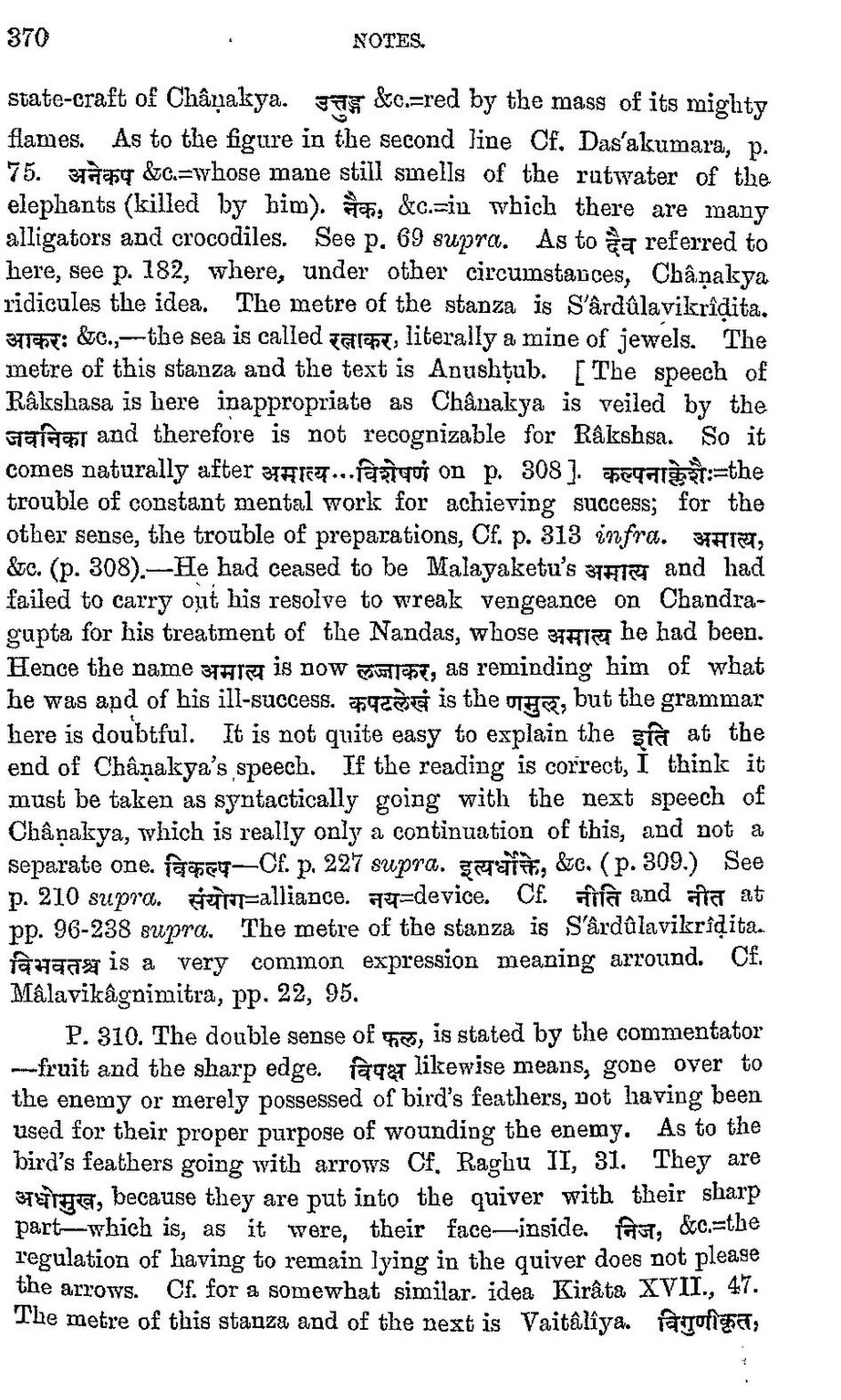state-craft of Châņakya. उत्त्गङ्ग &c.=red by the mass of its mighty flames. As to the figure in the second line Cf. Das'akumara, p. 75. अनेकप &c.=whose mane still smells of the rutwater of the elephants (killed by him). नैक, &c.-in which there are many alligators and crocodiles. See p. 69 supra. As to दैव referred to here, see p. 182, where, under other circumstances, Chânakya ridicules the idea. The metre of the stanza is S'ârdûlavikridita. आकारः &c.,--the sea is called रत्नाकर, literally a mine of jewels. The metre of this stanza and the text is Anushțub. [The speech of Râkshasa is here inappropriate as Chanakya is veiled by the जवनिका and therefore is not recognizable for Râkshsa. So it comes naturally after आमात्य...विशेषणं on p. 308]. कल्पनाक्लेशै:=the trouble of constant mental work for achieving success; for the other sense, the trouble of preparations, Cf. p. 313 infra. अमात्य, &c. (p. 308).-He had ceased to be Malayaketu's अमात्य and had failed to carry out his resolve to wreak vengeance on Chandra- gupta for his treatment of the Nandas, whose अमात्य he had been. Hence the name अमात्य is now लज्जकार्, as reminding him of what he was and of his ill-success. कपटलेखं is the णमुल्, but the grammar here is doubtful. It is not quite easy to explain the इति at the end of Chanakya's speech. If the reading is correct, I think it must be taken as syntactically going with the next speech of Chânakya, which is really only a continuation of this, and not a separate one. विपल्प_Cf. p. 227 supra. इत्यर्धोक्ते, &c. (p. 309.) See p. 210 supra. संयोग=alliance. नय=device. Cf. नीति and नीत at pp. 96-238 supra. The metre of the stanza is S'ârdûlavikridita.. विनभवतश्च is a very common expression meaning around. Cf. Mâlavikâgnimitra, pp. 22, 95.
P. 310. The double sense of फल, is stated by the commentator --fruit and the sharp edge. विपक्ष likewise means, gone over to the enemy or merely possessed of bird's feathers, not having been used for their proper purpose of wounding the enemy. As to the bird's feathers going with arrows Cf, Raghu II, 31. They are अधोमुख, because they are put into the quiver with their sharp part-which is, as it were, their face-inside.निज, &c.=the regulation of having to remain lying in the quiver does not please the arrows. Cf. for a somewhat similar, idea Kirâta XVII., 47. The metre of this stanza and of the next is Vaitâlâya. विगुणीकृत
